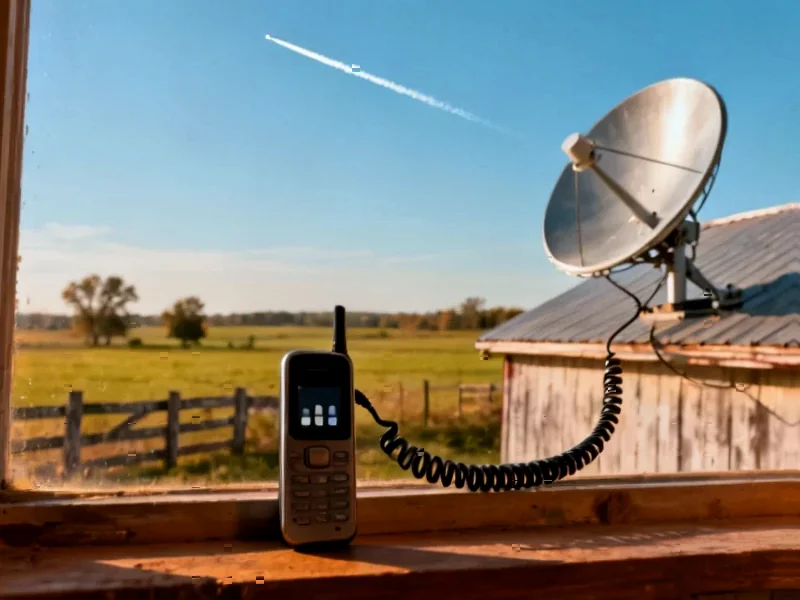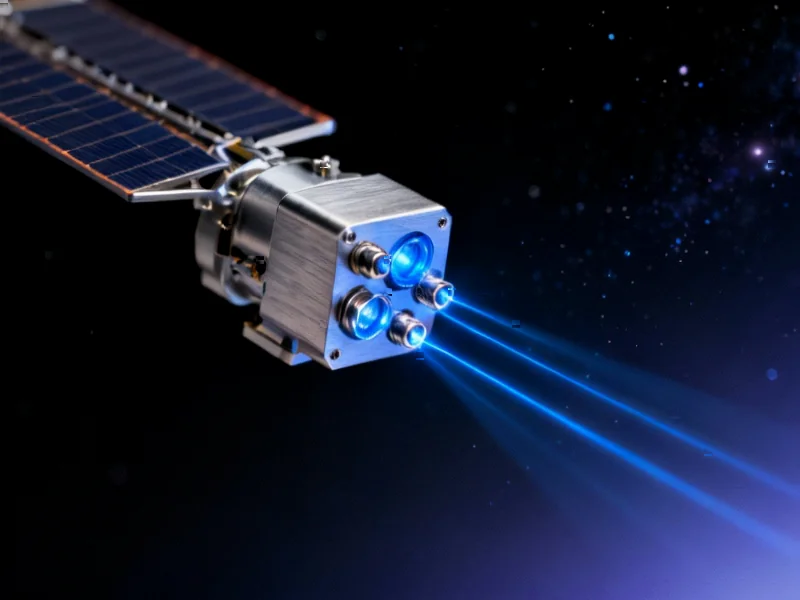According to New Scientist, University of California, Irvine researchers analyzed satellite tracking data during a May 2024 solar storm and found Starlink satellites experienced altitude drops up to half a kilometer, with the most significant effects on satellites facing the sun, near Earth’s poles, and over the South Atlantic Anomaly. The study revealed that satellites automatically compensated using ion thrusters, creating wave-like effects throughout the constellation as they maintained laser communication links. Network data from RIPE Atlas showed immediate spikes in packet loss during the storm, indicating service disruptions. The research comes after a February 2022 solar storm destroyed approximately 40 newly launched Starlink satellites, and with the solar cycle expected to peak again in the 2040s when tens of thousands more satellites will be in orbit. These findings raise critical questions about the long-term viability of massive satellite constellations.
The Domino Effect in Space
The research highlights a fundamental vulnerability in interconnected satellite constellations that goes beyond simple altitude changes. When one satellite compensates for solar storm effects, it triggers a chain reaction throughout the network as described by researcher Sangeetha Abdu Jyothi. This creates a moving target problem for collision avoidance systems that rely on predictable trajectories. Unlike isolated satellites that can be maneuvered independently, interconnected constellations face coordination challenges where automated responses could potentially amplify rather than mitigate risks. The “wave effect” observed suggests we’re dealing with complex system dynamics rather than simple individual satellite responses.
The Unprepared Space Economy
Current space traffic management systems were designed for an era of hundreds of satellites, not the tens of thousands now being deployed. The Federal Aviation Administration and other regulatory bodies lack robust frameworks for managing constellation-wide responses to space weather events. Insurance providers are similarly unprepared – most satellite insurance policies don’t adequately account for solar storm risks to entire constellations. As the research paper indicates, we’re essentially flying blind when it comes to predicting how these complex systems will behave during significant solar events. The lack of predictive models for atmospheric drag variations on short timescales represents a critical knowledge gap.
Historical Precedent and Future Risks
The 1859 Carrington Event serves as a sobering benchmark for what could happen to modern satellite infrastructure. While the May 2024 storm was three times weaker, a Carrington-level event today could potentially disable entire constellations simultaneously. What’s particularly concerning is that we’re building this infrastructure during a relatively quiet period in solar activity. As Mathew Owens notes, the difficulty in predicting substorms – the building blocks of larger geomagnetic events – means we’re essentially gambling with trillion-dollar infrastructure. The 2040s solar maximum will arrive when constellations like Amazon’s Project Kuiper and various Chinese systems are fully deployed, creating unprecedented congestion during peak space weather activity.
The Engineering Reality Check
While satellite operators are aware of space weather risks, the economic realities of constellation deployment create inherent vulnerabilities. The push for lower orbits (like Starlink’s 550 km altitude) to reduce latency means satellites operate in denser atmospheric regions where solar storm effects are magnified. Adding substantial radiation hardening and propulsion capacity would dramatically increase launch costs and reduce constellation profitability. There’s also the fundamental physics problem – you can’t shield against atmospheric drag increases caused by solar heating. The business model of massive constellations depends on relatively predictable orbital environments, which solar storms fundamentally disrupt.
Turning Constellations into Sensors
Ironically, the very vulnerability of these constellations provides an unprecedented research opportunity. As the researchers note, Starlink and similar networks essentially function as thousands of atmospheric probes collecting real-time data. This could accelerate our understanding of space weather effects in ways that dedicated scientific missions never could due to their limited numbers. The challenge will be convincing commercial operators to share this data broadly rather than treating it as proprietary information. Developing better predictive models requires collaboration across the industry, but competitive pressures may hinder the data sharing needed to protect everyone’s assets.



